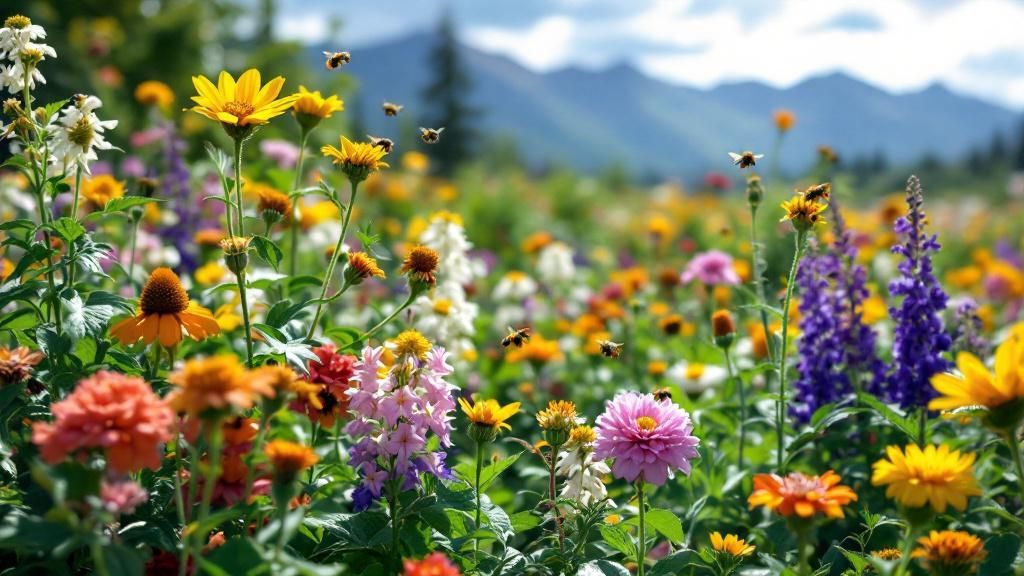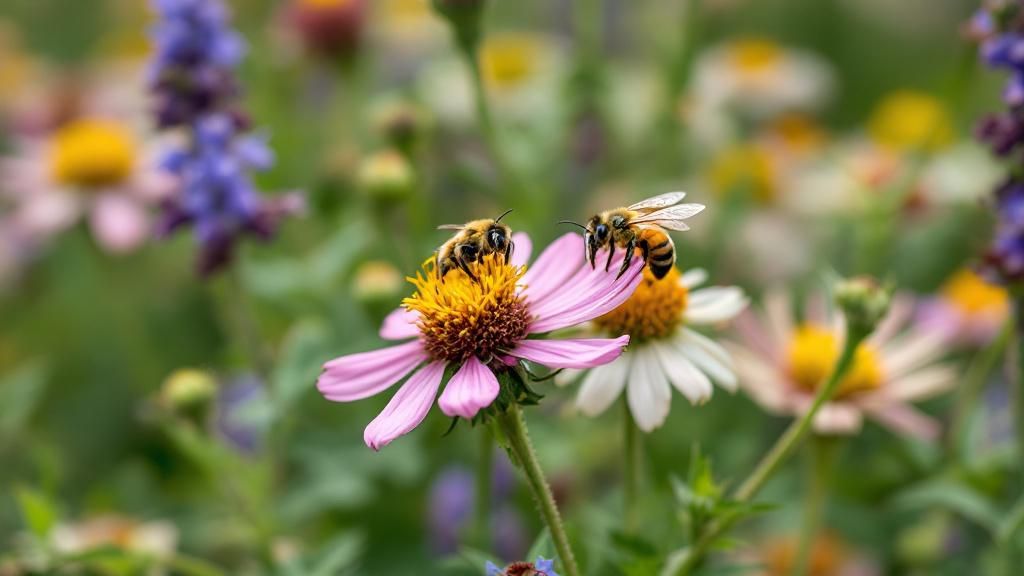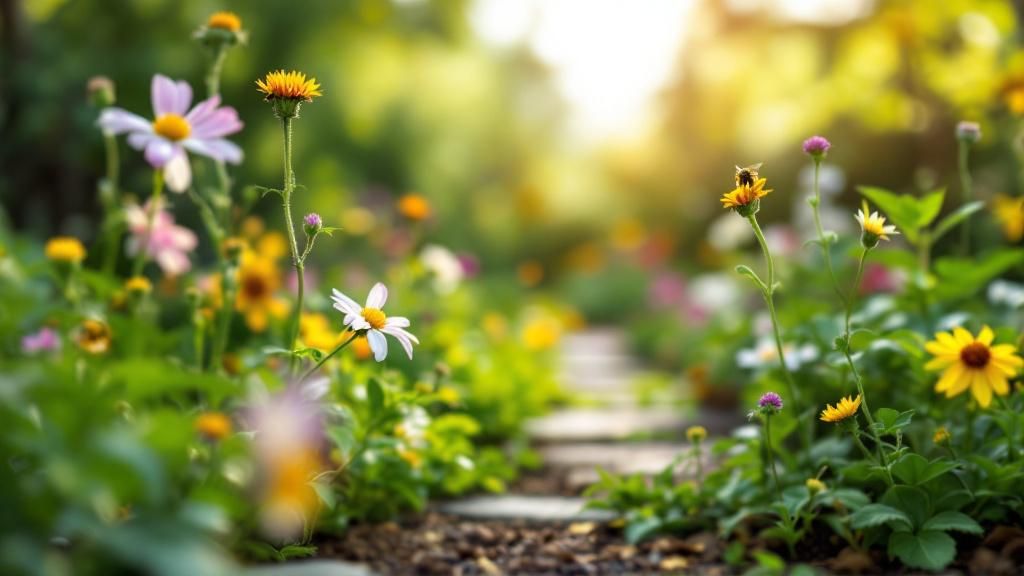
Native Plant Landscaping in Anchorage: A Natural Choice for Residential Yards
Key Takeaways
-
Native plant landscaping enhances both beauty and biodiversity in Anchorage homes.
-
Residential landscapes benefit from hardy, low-maintenance plants suited to Alaska’s environment.
-
Proper soil preparation is essential for healthy gardens in Anchorage’s clay-heavy soil.
-
Landscaping with native species supports pollinators and local wildlife year-round.
-
Professional assistance ensures code-compliant, ecologically balanced, and long-lasting landscapes.
Landscaping in Anchorage isn’t just about aesthetics—it’s about working with nature instead of against it. Between short growing seasons, freeze-thaw cycles, and nutrient-poor soils, your yard faces challenges that are unique to Alaska.
That’s where native plant landscaping shines. Instead of forcing exotic species to survive, Anchorage homeowners are increasingly turning to landscaping designs that prioritize native flowers, shrubs, and trees. These plants are naturally adapted to the region’s conditions and provide long-term visual interest without high maintenance.
Whether you’re refreshing a front yard or building a backyard haven from scratch, your residential landscape can benefit from integrating hardy native species, smart soil preparation, and purposeful layout planning.
What Makes Anchorage Landscaping Unique?
Anchorage’s cool summers and snowy winters demand strategic planning for any successful yard transformation. Here are a few important considerations:
-
Soil Composition: Anchorage soils tend to be clay-heavy and compacted. Without proper amendment using compost or topsoil, plants may struggle to establish deep roots.
-
Drainage Challenges: Poor drainage can lead to soggy lawns, root rot, and seasonal flooding.
-
Sunlight: Maximizing south-facing exposures helps extend the short growing season.
-
Wind Exposure: Anchorage’s wind can dry out soil and damage fragile plants, especially near the coast.
Native landscaping offers practical solutions. Plants like fireweed, yarrow, and Labrador tea can thrive with minimal watering while also offering color and texture. These species don’t just survive—they thrive.
Benefits of Landscaping With Native Plants
Landscaping with native plants in Anchorage isn’t just about environmental responsibility—it’s also about functionality and cost-effectiveness. Here’s how:
-
Low Maintenance: Native plants are already adapted to Alaska’s harsh climate, requiring less irrigation and fewer chemical fertilizers.
-
Pollinator Support: Species like lupine and northern geranium support bees and butterflies critical to local ecosystems.
-
Soil Health: Native perennials stabilize the soil, helping prevent erosion on slopes or uneven properties.
-
Natural Beauty: These plants provide year-round color and texture, even when other garden plants fade.
Landscaping with native species also reduces the need for frequent replanting and weeding. Over time, your yard becomes more self-sustaining and resistant to invasive weeds.
Key Elements of Residential Landscaping in Anchorage
Transforming your outdoor space involves more than just planting flowers. A functional and attractive landscape often includes:
1. Grading and Soil Preparation
Before planting, it’s essential to assess your yard’s slope and drainage. Grading can help redirect water away from your foundation, while a layer of nutrient-rich topsoil ensures your plants take root successfully.
2. Pathways and Edging
Gravel or flagstone walkways are low-maintenance and provide structure. Edging around flower beds helps keep mulch in place and defines your planting zones.
3. Plant Zones
Designate specific areas for trees, shrubs, flowers, and open lawn. Grouping plants by watering needs reduces waste and improves their overall health.
4. Mulching
Mulch helps conserve moisture, suppress weeds, and protect roots from Anchorage’s temperature swings. Organic options like wood chips or shredded bark work well.
5. Raised Beds
For vegetable gardens or showpiece flower beds, raised beds improve soil drainage and make gardening easier on your back.
Supporting Wildlife While Enhancing Your Yard
A beautiful yard and an eco-friendly one don’t have to be separate goals. Incorporating plants that attract bees, butterflies, and birds helps preserve Anchorage’s native species.
Plants like arnica, goldenrod, and wild rose not only brighten up your landscape but also feed pollinators and small animals. Including berries like crowberry or lingonberry in your garden provides late-season interest and natural food sources for local birds.
Frequently Asked Questions
What native plants are best for Anchorage landscaping?
Lupine, fireweed, yarrow, Labrador tea, and sedum are excellent options. These perennials are hardy, colorful, and support pollinators.
How do I prepare my yard for planting native species?
Start by grading to improve drainage, then add compost or topsoil to enhance soil quality. Spring and early summer are the best times for planting.
Do native plants need fertilizer?
Generally, no. Most native species grow well in Anchorage’s natural conditions. However, a layer of compost can help during establishment.
How do I attract more pollinators to my yard?
Choose a variety of flowering plants that bloom throughout the season. Clustering them together makes it easier for pollinators to find them.
Is professional help necessary?
For larger projects, yes. Residential landscaping in Anchorage often requires grading, soil amendment, and plant selection expertise. Partnering with a local professional helps avoid costly mistakes.
From grading and soil prep to planting native species that thrive in Alaska’s harsh climate, designing a residential landscape in Anchorage takes insight and intention. Titan has supported countless homeowners in transforming their yards into beautiful, low-maintenance spaces that support wildlife and add property value.
With the right approach, your yard can become more than just a green space—it can be a vibrant part of Anchorage’s living ecosystem.

